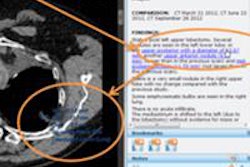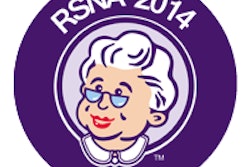Emergency department (ED) physicians increasingly want off-hours imaging scans interpreted via final reads from attending radiologists rather than preliminary reads from residents. And more of them are getting their way, according to a study published in the July issue of the Journal of the American College of Radiology.
How are academic radiology departments responding? By getting creative, wrote lead author Dr. Andrew Sellers and colleagues from the University of Virginia in Charlottesville.
"Despite the widespread use of preliminary interpretations, there is significant pressure for academic centers to provide 24-hour staff coverage with final interpretations immediately available to the emergency department clinical staff," the authors wrote. "These demands are being met by different programs in a multitude of ways, but most commonly by the extension of subspecialty imaging coverage into the early evening hours with additional, primarily general radiology staff coverage for later evening hours."
The researchers conducted a Web-based survey of programs listed by the American Society of Neuroradiology as having neuroradiology fellowships. Although the initial contacts for the survey were neuroradiologists, Sellers' group solicited information about each institution's entire program and all imaging studies (JACR, July 2014, Vol. 11:7, pp. 725-730).
An emailed questionnaire asked respondents about the following:
- Staff composition in the radiology department and number of hospital emergency departments serviced
- Method used to provide service to the emergency department during weekends and weekdays
- Any incentives offered for after-hours coverage
- Whether the department has expanded its after-hours coverage in the past three years -- and if not, whether it is being considered
- What has driven the expansion of after-hours coverage
Sellers and colleagues defined "staff coverage" as hours provided in real-time by attending physicians, and they asked whether final interpretations were made by subspecialty or general staff (either in house or remotely).
The researchers received 67 responses from 96 institutions, for a 70% response rate. The largest program included in the study had 169 attending radiologists and included all subspecialties, while the smallest had 17. The average number of employed radiologists at responding institutions was 53.
The majority of study participants (65%) said that their radiology department provided after-hours imaging interpretation to the emergency departments of two or more hospitals:
- 73% (49 of 67 programs) reported providing only preliminary interpretations by residents for ED reports during overnight hours.
- 27% (18 of 67) said they provided 24-hour real-time staff coverage; of these, 72% (13 of 18) did so with dedicated ED sections.
- Only 3% (2 of 67) offered 24-hour subspecialty staff coverage.
Forty-eight percent of the 67 survey respondents used a form of the traditional call system, with on-call, onsite residents providing preliminary readings. Twenty-one percent of programs used dedicated emergency department sections to cover some or all after-hours studies. Nineteen percent of programs used rotating staff schedules to cover emergency services, while only 12% used teleradiology services to provide after-hours ED coverage, with the majority of these only providing preliminary interpretations.
About half of the survey respondents said they offer incentives for covering evening or night shifts, such as additional money, two-to-one vacation time, or time off the clinical schedule, according to the authors. Half of the institutions included in the survey reported that they had expanded after-hours coverage in the past three years, citing the emergency department itself as the main driver for this change, with hospital administration and standard-of-care issues taking second and third place.
Though after-hours staff coverage of the emergency department has increased overall in recent years, 24-hour, real-time staff coverage is still rare, at 27% of survey participants, Sellers' group wrote. But its incidence has almost tripled since 2007, when a similar survey found that 24-hour staff coverage was being offered by only 10% of surveyed programs.
"24-hour subspecialty coverage remains very rare, because only very large programs have the resources to offer it," the authors wrote. "This finding begs the question of whether the general trend of expanding after-hours coverage will continue in the current and projected environment of decreasing reimbursement and remuneration and, if so, what effect this will have on departmental financial health."




















